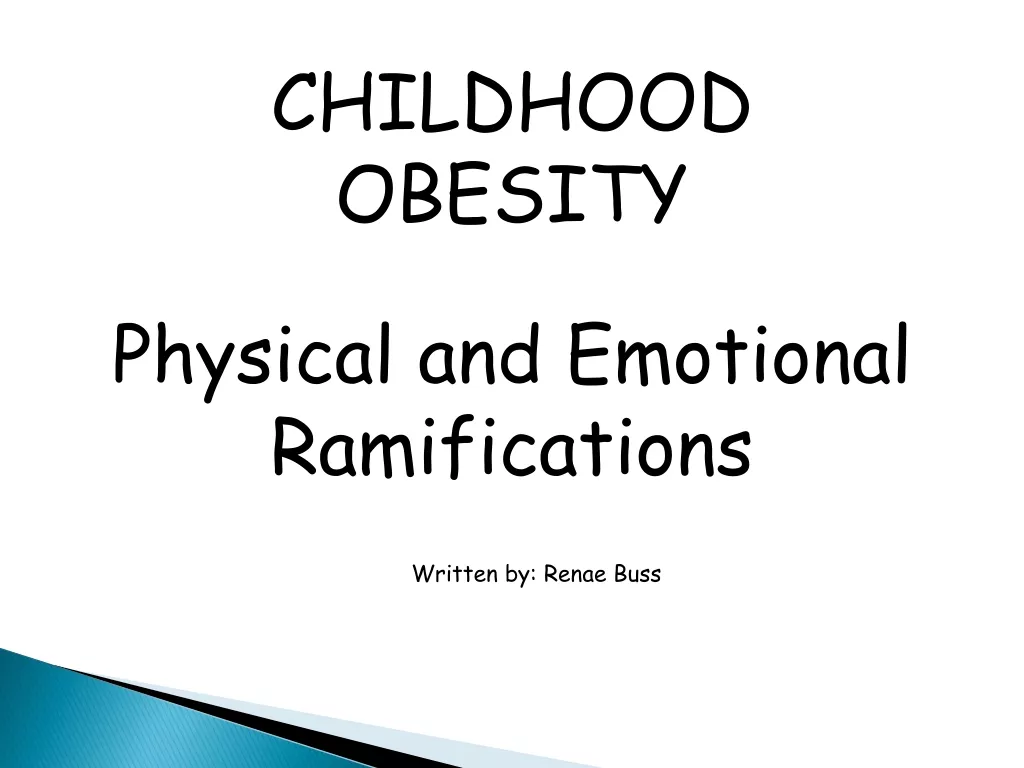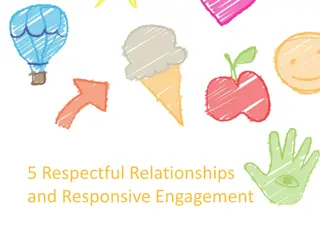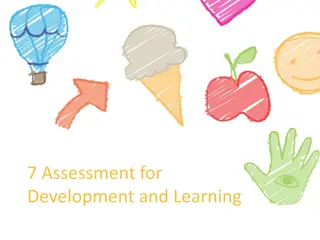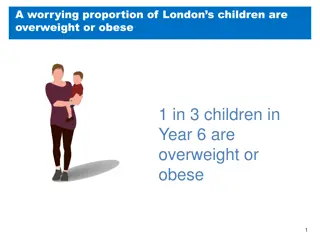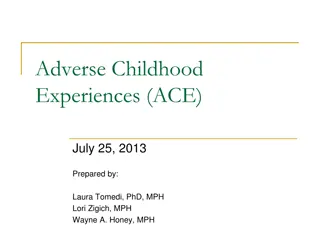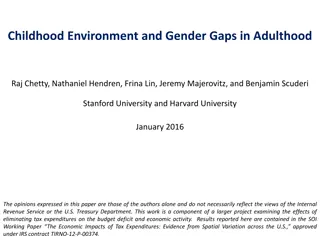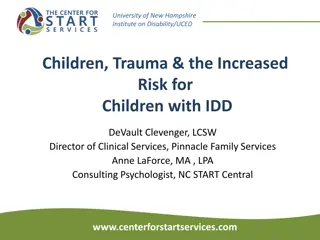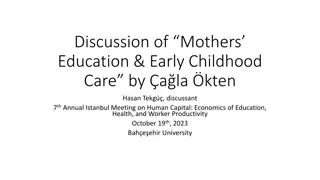
Growth and Development in Childhood Education
Explore the concepts of growth and development in childhood education, focusing on the factors influencing them, principles governing them, and the impact of nature vs. nurture. From physical growth to social influences, gain insights into the essential aspects of child development.
Download Presentation

Please find below an Image/Link to download the presentation.
The content on the website is provided AS IS for your information and personal use only. It may not be sold, licensed, or shared on other websites without obtaining consent from the author. If you encounter any issues during the download, it is possible that the publisher has removed the file from their server.
You are allowed to download the files provided on this website for personal or commercial use, subject to the condition that they are used lawfully. All files are the property of their respective owners.
The content on the website is provided AS IS for your information and personal use only. It may not be sold, licensed, or shared on other websites without obtaining consent from the author.
E N D
Presentation Transcript
DHANALAKSHMI SRINIVASAN COLLEGE OF EDUCATION PERAMBALUR.621 212. B.Ed FIRST YEAR Mr.C.MANIMARAN ASSISTANT PROFESSOR
UNIT -1 GROWTH AND DEVELOPMENT Introduction: In general, childhood is the age span ranging from birth to adolescence. It is the time for children to be in school and at play, to grow strong and confident with the love and encouragement of their family and an extended community of caring adults. It is also a precious time in which children should live free from fear, safe from violence and protected from abuse and exploitation. As such, childhood means much more than just the space between birth and the attainment of adulthood. It refers to the state and condition of a child s life to the quality of those years.
Growth Development Growth is quantitative Development is qualitative 1. The term is used in purely physical increase in size, length Development in shape, form improved working or functioning Growth does not continue throughout life. It stops when maturity has been attained It continues progressive throughout life The changes produced by growth are the subject of measurement. They may be quantified Development functioning and behavior and hence bring qualitative changes. It can be measured by observation Growth is cellular. It takes place due to the multiplication of cells. Development is progressive and orderly. sense. It generally refers to implies overall structure resulting 2. change or its 3. 4. implies improvement in 5.
Factors influencing Growth and Development of the Child. Growth and development depends upon multiple factors or determinates. They influence directly or indirectly by promoting or hindering the process. Prenatal factors Genetic Potential Sex Fetal Harmones Fetal growth factors Placental factors Maternal factors Postnatal factors Nutrition Factors Infections Hormonal influences Chemical agents Social factors Socio economic status Poverty Natural resources Climate Emotional Factors Physical and Psychological environment Cultural factors
Principles of Growth and Development Hurlock (2015) in her book on Child Development listed the 10 fundamental facts about development and named it as principles of development. Development involves change Early development is more critical than later development Development is the product of maturation and learning Developmental pattern is predictable Developmental pattern has predictable characteristics There are individual differences in development There are periods in the developmental pattern There are social expectations for every developmental period Every area of development has potential hazards Happiness varies at different periods in development
Impact of nature and nurture on child development Developmental change is continuous throughout our life span. It has been described as a lifelong process of gains and losses. In the past, hereditary and environmental factors were considered to be black and white or operating separately each other. It was one or the other nature (heredity) or nurture (environment). This lead to very heated arguments about which were more important. Today it is generally agreed that heredity and environment are both important factors and development is a combination of both. A Child s genetic make-up determines its developmental potential, but reaching that potential is very much dependent on the environment in which the child grows up.
Nature Vs Nurture Nature Versus Nurture is a psychological term related to whether heredity or the environment most impacts human psychological development (bahaviour, intelligence, personality and so on). In the Nature Vs Nurture debate nature refers to an individual s innate qualities and nurture refers to personal experiences. The question of whether a child s development is most influenced by genetics (nature) or environment (nurture). There are number of argument that biological and environmental factors have strongest influence on child development. John Locke (1632-1704) viewed the child as a tabula rasa (blank slate). According to this idea, children begin as nothing at all; their characters are shaped entirely by experience. Locke saw parents as rational tutors who can mould the child in any way they wish through careful instruction, effective example, and rewards for good behavior. According to Locke development as continuous. Adult like behavior are gradually built up through the warm, consistent teaching of parents. His view of the child as a tabula rasa led him to champion nurture the power of the environment to shape the child.
Jim Lewis and Jim Springer identical twins separated early in life and reared apart. The Minnesota Twins Study, which highlighted the genetic and environmental connections that underline developmental change. Jim Lewis and Jim Springer discovered some amazing similarities in their lives. As children, both had been fretful sleepers and nail- biters Both suffered from migraines, haemorrhoids and high blood pressure. Both had pet dogs named Joy Both had married women named Linda, and both had divorced and then remarried women named Belty. Jims Lewis named his first son James Allen and Jim Springer named first son James Alan Both worked as Sheriff s deputies Both liked to go to the same Florida beach on holidays, drink the same brand of beer and smoke the same brand of cigarettes. The Minnesota Twins study found that identical twins raised together or apart were far more similar on many psychological tests than non-identical twins and siblings raised in the same family. The Jims twins, for example scored strikingly similar scores on a series of personality and intelligence tests and even had very similar handwriting. (Tollegenetal 1998). The roles of both heredity and environment are extremely complex and very difficult to separate. The extent to which heredity and environment influence developmental change is now the question. Both clearly play a role, but how much of a role? In many cases, genes produce a predisposition and the environment further determines the outcome. Perhaps nature Vs nurture should be changed as nature and nurture.

